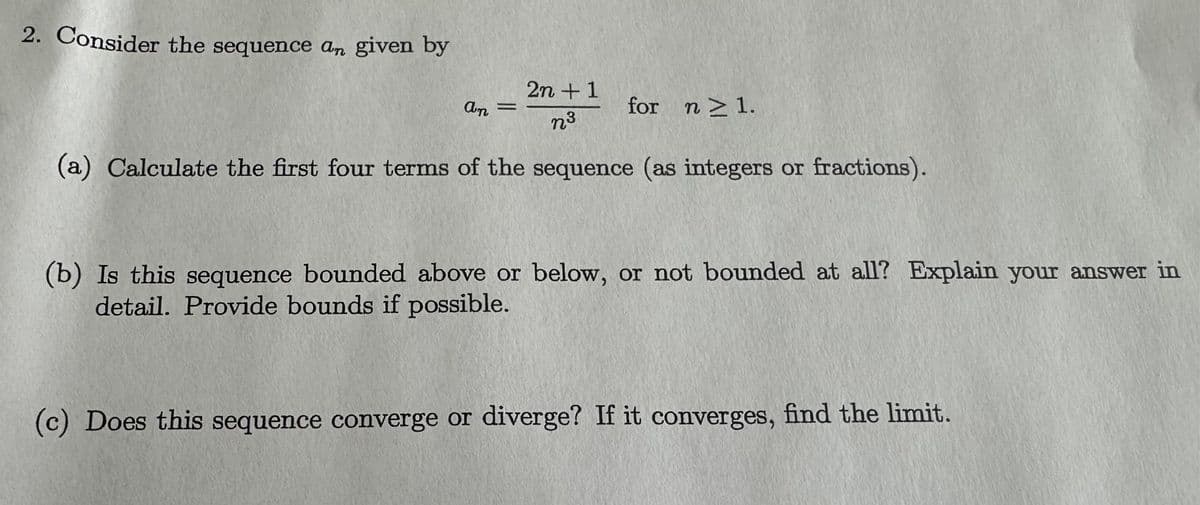2. Consider the sequence an given by 2n +1 n³ (a) Calculate the first four terms of the sequence (as integers or fractions). an = for n ≥ 1. (b) Is this sequence bounded above or below, or not bounded at all? Explain your answer in detail. Provide bounds if possible. (c) Does this sequence converge or diverge? If it converges, find the limit.
2. Consider the sequence an given by 2n +1 n³ (a) Calculate the first four terms of the sequence (as integers or fractions). an = for n ≥ 1. (b) Is this sequence bounded above or below, or not bounded at all? Explain your answer in detail. Provide bounds if possible. (c) Does this sequence converge or diverge? If it converges, find the limit.
Algebra & Trigonometry with Analytic Geometry
13th Edition
ISBN:9781133382119
Author:Swokowski
Publisher:Swokowski
Chapter10: Sequences, Series, And Probability
Section10.1: Infinite Sequences And Summation Notation
Problem 72E
Related questions
Question
100%

Transcribed Image Text:2. Consider the sequence an given by
2n +1
n³
(a) Calculate the first four terms of the sequence (as integers or fractions).
an
=
for n ≥ 1.
(b) Is this sequence bounded above or below, or not bounded at all? Explain your answer in
detail. Provide bounds if possible.
(c) Does this sequence converge or diverge? If it converges, find the limit.
AI-Generated Solution
Unlock instant AI solutions
Tap the button
to generate a solution
Recommended textbooks for you

Algebra & Trigonometry with Analytic Geometry
Algebra
ISBN:
9781133382119
Author:
Swokowski
Publisher:
Cengage

Algebra & Trigonometry with Analytic Geometry
Algebra
ISBN:
9781133382119
Author:
Swokowski
Publisher:
Cengage